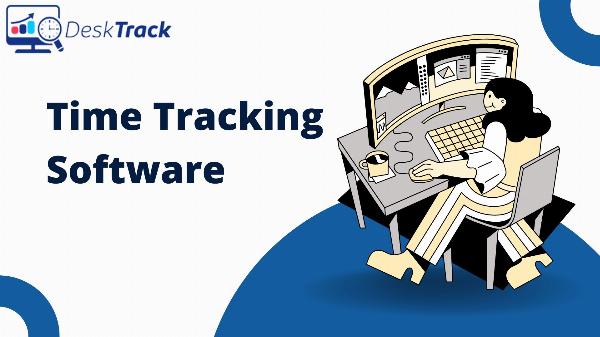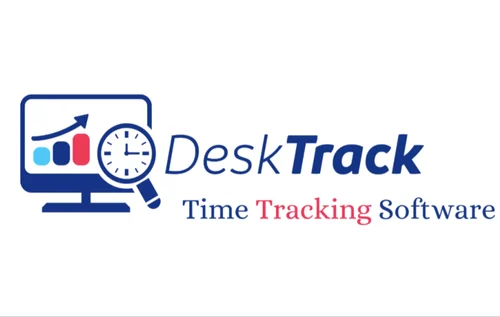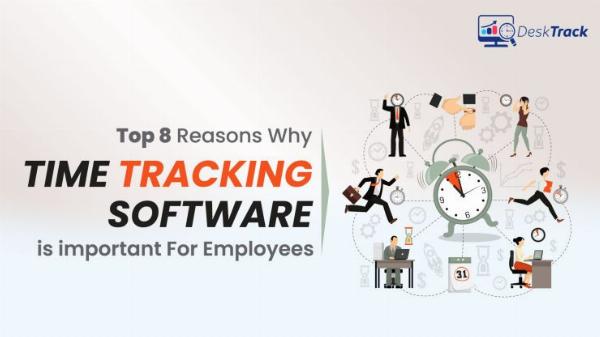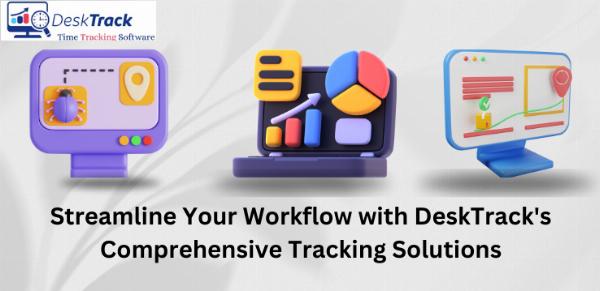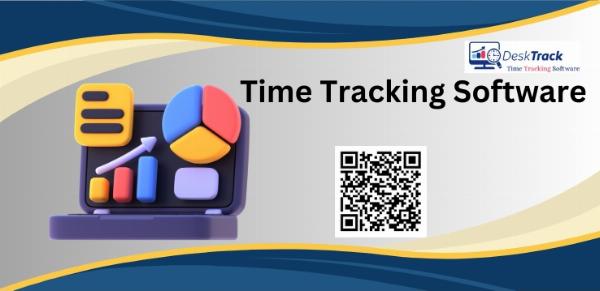 HARO Backlinks – Get Cited Like a Pro in Top Media!
HARO Backlinks – Get Cited Like a Pro in Top Media!
Maximizing Efficiency: A Complete Guide to Productivity Monitoring Software
Written by james » Updated on: June 17th, 2025

In today’s fast-paced business world, maximizing productivity is a priority for organizations of all sizes. Whether employees work in-house or remotely, companies are increasingly turning to productivity monitoring software to track and optimize performance. These tools are designed to give managers detailed insights into how employees are using their time, helping to identify bottlenecks, improve efficiency, and ensure that goals are being met. This guide explores the concept of productivity monitoring software, its key features, how it can be used to maximize efficiency, and best practices for implementation.
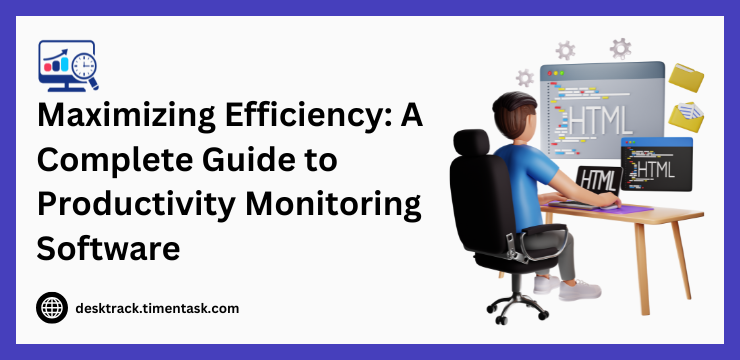
What is Productivity Monitoring Software?
Productivity monitoring software is a type of tool that helps businesses track the activities of their employees in real-time. It typically collects data about the time spent on various tasks, applications, and websites. This data is then analyzed to provide managers with insights into employee behavior and work patterns. In addition to time tracking, some productivity monitoring tools include features like activity logging, project management integration, reporting, and even real-time alerts when productivity dips below a certain threshold.
Read More: Why Your Business Needs an Employee Scheduling Software
While the primary goal of productivity monitoring software is to help businesses enhance efficiency, it also serves a broader purpose: to help employees manage their time better, stay focused, and meet deadlines. By providing detailed insights into where time is spent, employees can make informed decisions about how to prioritize tasks and eliminate distractions.
Key Features of Productivity Monitoring Software
When evaluating productivity monitoring software, businesses should look for tools with features that align with their specific needs. Here are some of the key features to consider:
1. Time Tracking and Activity Logging
One of the core features of productivity monitoring software is time tracking. This allows businesses to log the exact amount of time an employee spends on each task or project. Some tools offer automatic time-tracking software, while others require employees to manually start and stop timers when switching between tasks.
In addition to time tracking, activity logging tracks which applications, websites, or documents employees are working on. This data gives managers insight into where employees are dedicating their time and helps identify inefficiencies. For example, if an employee is spending hours on social media or entertainment sites, this data can help managers address the issue and refocus the employee’s efforts.
2. Screenshot and Screen Recording
Some productivity monitoring tools offer the ability to take screenshots monitoring or record employee screens at regular intervals. This allows managers to verify whether employees are working on the right tasks and helps prevent distractions. However, this feature should be used judiciously, as excessive screen monitoring can lead to privacy concerns and negatively impact employee morale.
3. Task and Project Management Integration
Many productivity monitoring tools integrate with task and project management platforms like Asana, Trello, or Jira. These integrations allow managers to track the time spent on specific tasks and projects, making it easier to understand how much time is being spent on various stages of a project.
By linking time tracking to project goals, businesses can ensure that projects stay on track and that resources are being allocated effectively. This integration can also help identify underperforming areas or team members who may need additional training or support.
4. Real-Time Alerts and Notifications
To further enhance efficiency, many productivity monitoring software tools provide real-time alerts when employees are not meeting expectations. These alerts can notify managers if an employee has been inactive for an extended period or if productivity levels fall below a defined threshold. Managers can then take immediate action to understand the issue, offer guidance, or make adjustments to workloads.
5. Reporting and Analytics
Comprehensive reporting and analytics are essential for understanding productivity trends over time. Most productivity monitoring software provides detailed reports on employee activity, time spent on various tasks, and overall performance metrics. This data can be used for performance evaluations, identifying bottlenecks in workflows, and making data-driven decisions about resource allocation.
Reports can also highlight areas where employees are excelling, allowing businesses to reward top performers and foster a positive work culture.
6. Employee Engagement and Feedback Tools
While the focus of productivity monitoring is on efficiency, many tools also incorporate features that measure employee engagement. This might include surveys or feedback mechanisms that allow employees to share their thoughts on how their work is being managed or how they feel about the software.
Engagement tools help strike a balance between monitoring productivity and maintaining a positive workplace culture, ensuring that employees feel valued and heard rather than micromanaged.
How Productivity Monitoring Software Maximizes Efficiency
Improved Time Management
Productivity monitoring software provides employees with clear insights into how they’re spending their time, enabling them to make adjustments for better time management. For example, if an employee sees that they’re spending a significant amount of time on low-priority tasks or distractions, they can reallocate their efforts to more important work.
Additionally, time tracking allows businesses to identify areas where time is being wasted, such as lengthy meetings or inefficient workflows. Managers can then implement changes to reduce wasted time, boost efficiency, and ensure that employees remain focused on their goals.
Enhanced Accountability
Accountability is crucial for maintaining productivity, especially in remote work settings where managers can’t easily observe employees. Productivity monitoring software ensures that employees are held accountable for their time and tasks. This transparency helps employees stay focused and prioritize tasks that align with organizational goals.
When employees know that their activities are being tracked, they are more likely to stay on task, resulting in increased overall productivity.
Data-Driven Decision Making
Productivity monitoring software provides managers with detailed data on employee performance, enabling data-driven decision-making. By analyzing trends and patterns, managers can identify which teams or employees are performing well and which ones may require additional training or resources.
For example, if certain employees consistently meet or exceed productivity targets, managers can look into the specific strategies or techniques that are working well for them and share these best practices with other team members.
Improved Resource Allocation
With detailed insights into how employees spend their time, businesses can make more informed decisions about resource allocation. If a project or task is taking longer than expected, managers can identify whether additional resources, such as manpower or tools, are needed to meet deadlines.
Productivity software also enables managers to identify high-performing employees who can be assigned to more complex tasks or promoted, ensuring that resources are used effectively to meet company goals.
Reduced Distractions and Unnecessary Interruptions
Many productivity monitoring tools can track and reduce distractions, helping employees stay focused. Features like website blocking or idle time alerts prevent employees from wasting time on non-work-related activities. These tools allow employees to focus on the most important tasks without constantly checking email, social media, or other distractions.
By reducing distractions, productivity software helps employees make the most of their workday, ultimately leading to improved performance and a more efficient workforce.
Read More: DeskTrack Guide: Employee Paid Time Off Tracking Software
Best Practices for Implementing Productivity Monitoring Software
Be Transparent with Employees
One of the most important factors in successfully implementing productivity monitoring software is transparency. Employees should be informed about the software’s purpose and how it will be used. Emphasize that the goal is to help everyone work more efficiently and improve performance, not to micromanage or invade privacy.
Read More:
Focus on Results, Not Just Activity
While tracking time and activities can be useful, it’s important to focus on outcomes rather than just raw activity. Monitoring software should be used to identify inefficiencies and areas for improvement, not to penalize employees for taking breaks or engaging in non-work-related activities when appropriate.
Respect Employee Privacy
It’s essential to balance monitoring with respect for employee privacy. Ensure that any data collected is used ethically and that employees have access to information about what is being tracked. Implement software that complies with privacy regulations like GDPR or CCPA to avoid potential legal issues.
Offer Training and Support
To maximize the effectiveness of productivity monitoring software, provide training to employees on how to use the tool. This will help them understand how to log time, track tasks, and interpret the data generated by the software. Ongoing support ensures that employees feel comfortable using the tool and don’t feel overwhelmed by its features.
Use Data to Foster a Positive Work Culture
Use the insights gained from productivity monitoring to celebrate successes, recognize high performers, and offer support to those who may be struggling. Fostering a positive, supportive environment will lead to better employee engagement and motivation, driving long-term productivity improvements.
Conclusion
Productivity monitoring software is a powerful tool for maximizing efficiency in the workplace. By providing real-time insights into how employees spend their time, businesses can identify areas for improvement, optimize workflows, and improve accountability. However, it’s essential to implement these tools with care, ensuring transparency, respect for privacy, and a focus on results. When used effectively, employee monitoring software can enhance employee performance, boost business outcomes, and help organizations achieve their goals more efficiently.
Note: IndiBlogHub features both user-submitted and editorial content. We do not verify third-party contributions. Read our Disclaimer and Privacy Policyfor details.
Copyright © 2019-2025 IndiBlogHub.com. All rights reserved. Hosted on DigitalOcean for fast, reliable performance.


